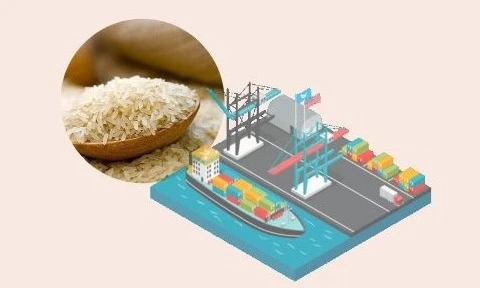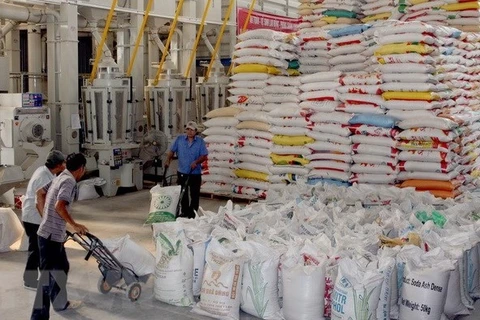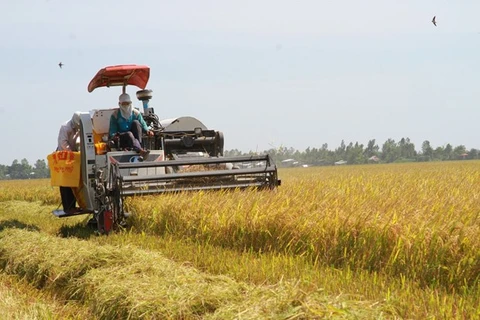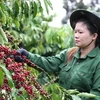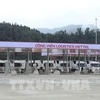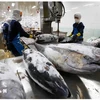Hanoi (VNA) - The Ministry of Industry and Trade has proposed that the Ministry of Agriculture and Rural Development intensify the restructuring of the rice industry to increase quality, improve efficiency, and develop better regional planning.
Many unpredictable factors
After reaching a record export level of 7.1 million tonnes last year, Vietnam's rice export activities in the first 7 months of 2023 continue to yield positive results, with an 18.7% increase in quantity, a 29.6% increase in revenue, and an average export price of 534 USD per tonne, up 9.2% year-on-year.
Rice exports have recorded significant growth in many markets, especially for fragrant and high-quality rice varieties that Vietnam specialises in. Some varieties have been sold overseas for more than 600 USD per tonne, setting the highest record in the past 11 years.
However, rice products in Vietnam’s domestic and export markets depend on several external factors.
On July 20, India announced a ban on rice exports (except for basmati rice), causing a global rice supply shortage and significantly affecting over 140 countries that import rice from India.
On July 17, Russia declared that it would not extend the agreement known as the Black Sea Grain Initiative. These two events, along with drought conditions, caused a chain reaction leading many countries to increase their grain reserves.
 Minister of Industry and Trade Nguyen Hong Dien at the international rice trade conference. (Photo: VietnamPlus)
Minister of Industry and Trade Nguyen Hong Dien at the international rice trade conference. (Photo: VietnamPlus) Policy changes by rice producing and exporting countries have led to rapid and often unpredictable developments in the global rice trade market.
Reference points for quality and product branding
According to the Ministry of Industry and Trade, the domestic production of rice is still small-scale and scattered, making it difficult to control the supply source for export at times. In addition, the small scale often results in uneven rice quality, and a lack of linkages throughout the production, collection, processing, distribution chain. The sector has yet to organize its connection, labour allocation, and production based on regional and local advantages, leading to a low degree of specialisation and a risk of supply bottlenecks in the market.
Considering these factors, Minister of Industry and Trade Nguyen Hong Dien emphasised the need to take control of the rapid and sustainable development of rice farming. This means ensuring the quality of rice seeds and product branding in order to maintain food security in all situations as well as sustain orders and export markets.
To achieve these goals, the official highlighted the importance of cooperation among stakeholders in the industry, ensuring a seamless production chain for sustainable value.
In addition, at the rice export conference in early August, the Ministry of Industry and Trade proposed that the Ministry of Agriculture and Rural Development intensify the restructuring of the rice industry towards improving quality and efficiency. This includes improving regional planning, production organisation, seed structure, cultivation techniques, technology application in production, harvesting, preservation, and ensuring official export standards.
Furthermore, the Ministry of Industry and Trade advised businesses to respect signed contracts to maintain their credibility with partners. It is also important to strike a balance between producers and exporters, and actively exploit sources of goods, and promote their brands. The group should proactively collaborate with local authorities to establish cooperation and support mechanisms, to guarantee a stable supply of quality products that meet the hygiene and food safety standards of importing countries./.


